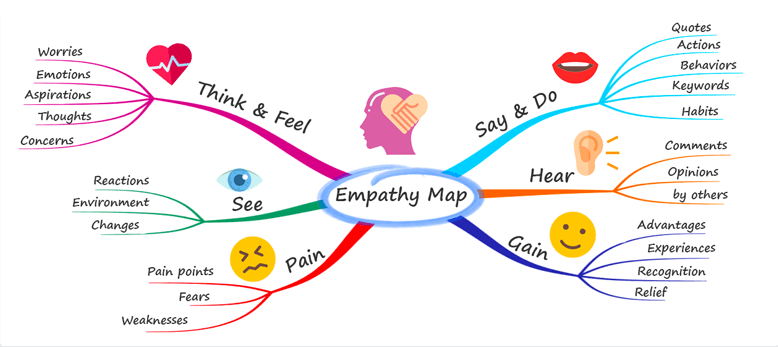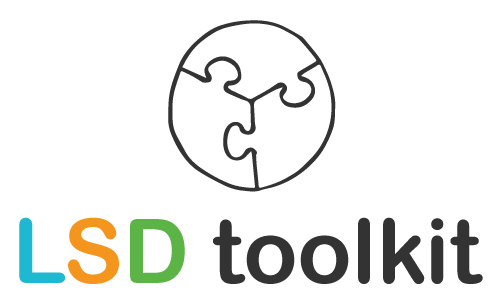The mind map is perhaps the most used design thinking tool. In any case, we use it almost daily. You can read more about it in the green LSD section. On this page an explanation and some tips.
Although, ‘reads’. The mind map technique is easiest to explain with a picture. You start in the middle with the subject and then fan out, always splitting the subject into smaller pieces. It is common to make multiple versions, because sometimes you get stuck or a different layout / structure is better.

